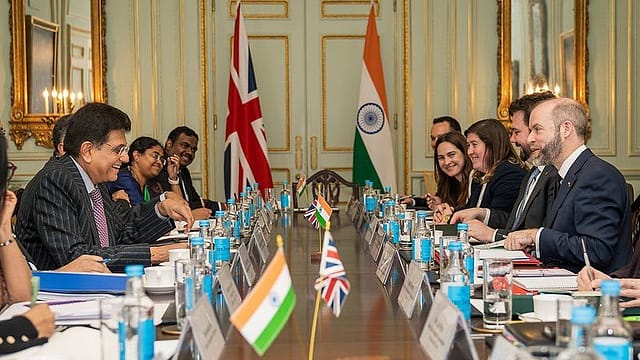India-UK FTA to augment bilateral trade by $60 billion by 2030: PHDCCI
ADVERTISEMENT

The India-UK Free Trade Agreement (FTA) is set to significantly boost bilateral trade to over $60 billion by 2030 through the elimination of tariffs on 99% of Indian exports, including textiles, leather, and auto parts, according to a report by the PHD Chamber of Commerce and Industry (PHDCCI).
The FTA also addresses non-tariff barriers, streamlining trade processes, said Hemant Jain, President, PHDCCI. In 2024, South East England and London led UK imports from India, while Indian services exports to the UK reached $13.25 billion in 2022, mainly delivered remotely, Jain added.
Remarkably, the UK remains a key investor in India, with $34.79 billion FDI, focused on finance, tech, and infrastructure. The agreement will further catalyse investment and boost employment opportunities in the country, said Jain.
“The FTA is expected to benefit SMEs, especially in labour-intensive sectors, through duty-free access, regulatory simplification, and improved mobility. It also supports digital trade and gender-inclusive growth, marking a major step in strengthening India–UK economic relations,” Jain said.
As part of the trade deal, the UK will eliminate tariffs on 99% of Indian exports, encompassing textiles, footwear, and food items like frozen prawns, potentially leading to reduced prices for UK consumers. The reduction of non-tariff barriers is expected to ensure free flow of goods and services.
The UK remains a significant investor in India, with a cumulative Foreign Direct Investment (FDI) stock of approximately US$34.79 billion in FY2024, positioning the UK as the sixth-largest investor in India.
January 2026
Netflix, which has been in India for a decade, has successfully struck a balance between high-class premium content and pricing that attracts a range of customers. Find out how the U.S. streaming giant evolved in India, plus an exclusive interview with CEO Ted Sarandos. Also read about the Best Investments for 2026, and how rising growth and easing inflation will come in handy for finance minister Nirmala Sitharaman as she prepares Budget 2026.
Predominantly target sectors such as financial services, technology, manufacturing, and infrastructure. These sectors align with India's economic priorities and offer substantial growth opportunities
Major UK investments are concentrated in Indian metropolitan areas like Mumbai, Bengaluru, and Delhi NCR, which serve as hubs for finance, technology, and commerce. Given the current trajectory and policy support, UK FDI into India is expected to continue growing, further strengthening economic ties between the two nations, said PHDCCI.
South East and London are the top two regions, together accounting for around 40.5% of the UK’s imports from India, according to PHDCCI. The Midlands (West and East) and North West are also significant importers, likely reflecting concentration of manufacturing and automotive industries.
The FTA promises enhanced market access and tariff reduction. “99% of Indian exports to the UK, including textiles, apparel, leather goods, marine products, and auto parts, will be duty-free which will increase competitiveness of Indian SME in the UK market,” the reports said.
The FTA could also revive India’s labour-intensive sectors. “Apparel and gems and jewellery, which witnessed decline in market share over past 5 years, stand to benefit from reduced tariffs,” said PHDCCI.
The agreement includes provisions aimed at liberalising non-tariff measures, such as product standards and technical regulations reducing market access costs for SME facilitating easier entry into the UK market A dedicated chapter in the FTA focuses on enhancing the competitiveness of women-owned and women-led SMEs, encouraging their participation in international trade and promoting economic inclusivity.
The FTA also offers improved business mobility. It includes a social security agreement which exempts temporary Indian workers in the UK from dual contributions for three years, reducing operational costs for SMEs sending employees abroad.
